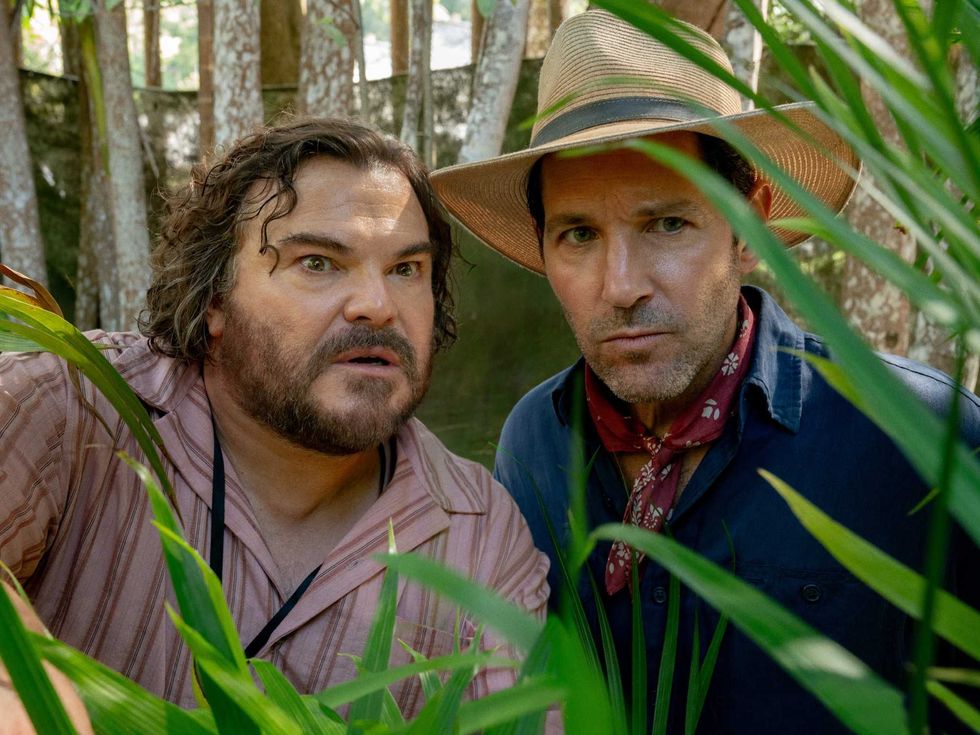Cliff Notes
A "House" grows in the Museum District: Taniguchi's Asia Society Texas Center issimple & striking
 Yoshio Taniguchi, second from right, points out a design feature at the AsiaSociety Texas Center building, which he designed and is under construction.Photo by Jeff Fantich
Yoshio Taniguchi, second from right, points out a design feature at the AsiaSociety Texas Center building, which he designed and is under construction.Photo by Jeff Fantich The low slung building was designed to fit in with the Museum Districtneighborhood.Rendering by Taniguchi and Associates
The low slung building was designed to fit in with the Museum Districtneighborhood.Rendering by Taniguchi and Associates A second floor garden with an infinity pool will provide views of downtownHouston.Rendering by Taniguchi and Associates
A second floor garden with an infinity pool will provide views of downtownHouston.Rendering by Taniguchi and Associates A garden off from the art gallery will be planted with black bamboo.Rendering by Taniguchi and Associates
A garden off from the art gallery will be planted with black bamboo.Rendering by Taniguchi and Associates "I try for people to always look out on the greenery. Many architects (say),'Look at me.' My type (of architecture says) 'Look out from me.' That's what Ido," Taniguchi said.Rendering by Taniguchi and Associates
"I try for people to always look out on the greenery. Many architects (say),'Look at me.' My type (of architecture says) 'Look out from me.' That's what Ido," Taniguchi said.Rendering by Taniguchi and Associates
Over the past half-century, a handful of Houston buildings — the Astrodome, Pennzoil Place, Williams Tower, The Menil Collection — have been singled out for their striking architectural detail and design. But it's been a generation since Houston has produced a landmark structure — one that serves the community well while capturing national and international attention.
At last, there may be a contender to add to the list.
At the halfway construction point, the deceptively simple-looking Asia Society Texas Center, at the corner of Caroline and Southmore in the Museum District, resembles a concrete bunker. But by this time next year, when it is finished and open to the public, it promises to be an intriguing combination of Zen-like calm and modern functionality, with three second-floor gardens, a 280-seat theater that features polished cherry wood walls and a steel mesh ceiling, an art gallery and several banquet/meeting rooms that will likely become a key destination for celebrations.
Internationally acclaimed Japanese architect Yoshio Taniguchi, who was in Houston this week to check on progress of the $48 million building, seemed pleased with what he saw, although he scrutinized every stairwell, beam and wall with an unerring eye for detail. (He has been know to obsess over the width of a stairway railing.)
The Asia Society Texas Center is his first-freestanding building in the United States and only his second U.S. project, after his much talked-about expansion and renovation of the Museum of Modern Art in New York.
Much like the Menil, the low-slung building was designed to fit in with the neighborhood.
"The scale of a project is very important," Taniguchi said. "Asia House (which is what the project was called when he was hired in 2004) is veritably a small scale house where people meet. It's like a living room. That's what I thought about (when designing it)."
The site, an L-shaped lot that takes up most of a city block (except for one piece of property officials could not acquire), also presented some challenges. To make maximum use of the site, Taniguchi placed the theater in the dog-leg portion and shaped the rest of the building, which houses the main entrance, a soaring lobby, a cafe and offices on the first floor, as a long horizontal structure.
He created a half-basement to keep a portion of the theater under ground level, so the building would not rise above two stories in height. No ugly air-conditioning equipment will mar the roof; 170 geothermal wells underneath a parking lot across the street will provide a cooling system for the building.
Everything seems well-thought out. While the front plaza is large — a field of dark stone walkways and jasmine set off by a high Jura limestone wall on one end — the entrance is small, and, thus far, relatively unadorned.
"The gateway to the building is one of the most important elements," Taniguchi said. "The intention is to make a small entrance to give a feeling of big space in the lobby. If you make a smaller entrance gate, you feel bigger inside as a contrast."
It also adheres to traditions of Japanese architecture, where entrances are small "so you have to shrink your body and bow as your enter the gate," Taniguchi explained. "It shows you're humble to the owner."
The 73-year-old architect seems ambivalent about how large the Asia Society Texas name should be on the building.
"I don't design very many buildings and I design very carefully," he said. "It's very important where you locate the name of the building. If it's too big you want to show off. If it's too small (people say), 'What's wrong with him?' "
He plans to give the idea of signage much thought before discussing it further with officials.
"Everything takes time, which makes this lady nervous," he said, referring to Martha Blackwelder, executive director of the Asia Society Texas Center, standing next to him during a tour of the half-finished building.
But Blackwelder, who is spearheading a drive to garner contributions for a $20 million endowment, seems excited about the building's possibilities. Asia Society Texas, a nonprofit organization that promotes Asian art and culture, hosts a range of activities, from the visit of Singapore Prime Minister Lee Hsien Loong to an appearance of Javanese shadow puppet master Ki Purbo Asmoro and a recent book signing by Houston Ballet star Li Cunxin.
"We're looking forward to growing into the building," Blackwelder said.
Upstairs on the second floor, the three major spaces will each look out onto a different garden. A sloped star jasmine garden adjoining a series of reconfigurable meeting rooms will be planted with cypress trees at one end to obscure a view of townhomes in the distance. "As much as possible I'd like to cover the background, so you feel like you're in a forest," Taniguchi said.
A garden with an infinity pool on the front side of the building will provide a view of the downtown Houston skyline while a smaller garden near the art gallery will feature rare Timor black bamboo and rotating sculptures.
"I tried to frame the landscapes around the building," Taniguchi said. "I try for people to always look out on the greenery. Many architects (say), 'Look at me.' My type (of architecture says) 'Look out from me.' That's what I do."
Use of highly finished, textured materials is also a Taniguchi trademark. During a tour, project manager Gary Hall and consulting architect Geoffrey Brune pointed out where such materials as Jura limestone, a black volcanic stone flooring called Balsaltina, rift cut Appalachian oak floors and large glass facades imported from Singapore will be incorporated into the building during the next nine months.
"In addition to his sensitivity with space, it's his materials that sing. They're austere, but they're so rich and elegant," Hall said. "The quality level, design and elegance are all something very unique."
Taniguchi plans to return to Houston in the spring to make sure the trees and other landscaping are placed precisely where he thinks they need to go.
For a man so meticulous, I wouldn't expect anything less.











